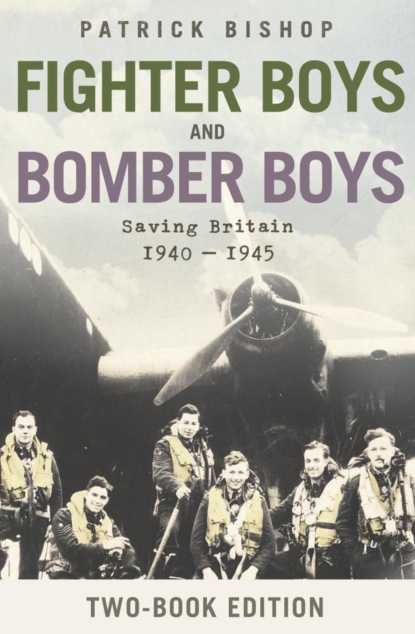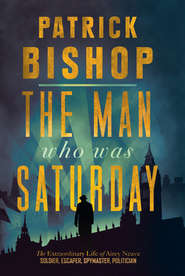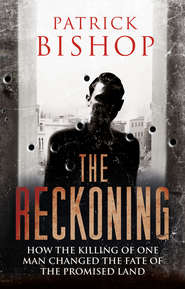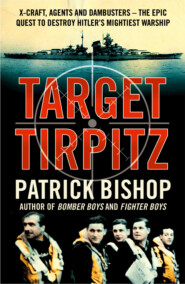По всем вопросам обращайтесь на: info@litportal.ru
(©) 2003-2024.
✖
Fighter Boys and Bomber Boys: Saving Britain 1940-1945
Настройки чтения
Размер шрифта
Высота строк
Поля
(#litres_trial_promo)
What was true was that to be a successful fighter pilot required different qualities from those that made a good infantry officer. In the air you were on your own. The business was entirely new. There was no one to teach it, no textbooks to refer to. To survive, the pilot had to make his own decisions and develop his own tactics. The new air service attracted men who were independent-minded, adventurous, often unusual, sometimes to the point of eccentricity. Among the first to emerge on the British side was Albert Ball, in whom the values of the playing field jostled unhappily with the neurosis of the battlefield. Ball was brought up in a middle-class home in Nottingham where his father hauled himself up the class ladder, starting his working life as a plumber and ending up mayor of the city. He was educated at a local fee-paying school, founded to promote Anglican principles and a sense of patriotic duty. There were cold baths, perpetual exercise and an emphasis on technology.
Like tens of thousands of other young men, he joined up as soon as he was able, and was posted to the infantry. Frustrated at the delay in being sent to the front he took private flying lessons to improve his chances of entering the RFC. Ball fell instantly in love with flying, despite the hazards. ‘It is rotten to see the smashes,’ he wrote in one of his frequent letters home. ‘Yesterday a ripping boy had a smash and when we got up to him he was nearly dead. He had a two-inch piece of wood right through his head and died this morning.’ He added, without apparent irony, that he would be ‘pleased to take you up any time you wish’, if his parents felt like a flip.
(#litres_trial_promo)
He arrived in France, now a lieutenant in the RFC, in time for the great Somme offensive. He flew a French Nieuport, one of the new generation of single-seater scouts. His methods marked him out immediately. He would fly straight into packs of enemy aircraft, getting in as close as he could, firing off a Lewis gun at point-blank range, breaking off an inconclusive attack only to change the ammunition drum and bore in again. It was simple, effective and desperately dangerous. He would return from sorties with his machine shredded by enemy fire.
On the ground his behaviour struck his fellow officers as odd. At his first base, Savy Aubigny aerodrome, north-west of Arras, he turned down a billet in the village, preferring first a tent, then a wooden hut he built for himself at the edge of the airfield, two miles from the squadron mess. He sent home for packets of seeds to plant marrows, lettuce, carrots, cress and flowers. He spent hours in the hangars, chatting with the riggers and fitters, making constant adjustments to his aeroplane to improve its capabilities, yet he seemed less interested in flying for its own sake than as a means of fighting. The camaraderie of the mess held little interest for him. Nor did women.
His main relaxation was the violin, which he would play after dinner while walking around a red magnesium flare. Another fellow pilot, Roderic Hill, described him sitting outside his hut, playing his gramophone and brooding. ‘He had but one idea: that was to kill as many Huns as possible, and he gave effect to it with a swiftness and certainty that seemed to most of us uncanny. He nearly always went out alone; in fact he would not let anyone fly with him, and was intolerant of proffered assistance.’
(#litres_trial_promo)
For all his oddness, he was respected. A young New Zealander pilot, Keith Caldwell, saw him as ‘a hero…and he looked the part too; young, alert, ruddy complexion, dark hair and eyes. He was supposed to be a “loner”, but we found him to be friendly…One felt that it could only be a matter of time before he “bought it”, as he was shot about so often.’
(#litres_trial_promo)
Looking now at the photographs of Ball, at the thick, glossy hair and the black eyes set in the taut, uncreased skin, one senses fatalism behind the easy smile. Almost from the beginning the mild bragging in the letters home is matched by disgust at what duty had led him into. By the end of August he was yearning for home. ‘I do so want to leave all this beastly killing for a time,’ he sighed in a letter.
(#litres_trial_promo) Yet even when complaining of nerves he would still take every possible opportunity to get airborne.
In October his superiors ordered him back to England for a rest and a new posting as an instructor. He was already famous, the most successful pilot in the RFC, with an MC, DSO and bar. The prime minister, Lloyd George, invited him to breakfast. He went to Buckingham Palace, where King George V presented him with his medals.
Despite the peace and the nearness to family that he had yearned for when in France, he was restless and unhappy and soon agitating to go back. The pressure worked. In February he was posted to 56 Squadron, which was being formed as an élite unit to fly the new SE5 fighters against the best of the German air force. While waiting he fell in love, with an eighteen-year-old florist called Flora Young, who an old friend had brought with him when he drove over to visit him at the base. The attraction was instantaneous. He offered to take her up in an aeroplane and she gamely accepted. That night he was writing to thank her for ‘the topping day I have had with you. I am simply full of joy to have met you.’
(#litres_trial_promo) On 7 April 1917 the squadron left England. Ball’s tour was supposed to be for a month only. He sent daily letters to Flora detailing his successes and setting himself a target. Once he had overtaken the German champion Oswald Boelcke, he would come home.
At 5.30 p.m. on Monday, 7 May, he lead a squadron of SE5s on an offensive sweep aimed at seeking out enemy fighters, believed to be led by the German ace Manfred von Richthofen, who were operating in the Arras area.
Cecil Lewis described the chocolate-coloured fighters flying into a ‘May evening…heavy with threatening masses of cumulus cloud, majestic skyscrapes, solid-looking as snow mountains, fraught with caves and valleys, rifts and ravines’.
(#litres_trial_promo) Suddenly, high over the Cambrai-Douai road, out of these clouds came the Albatross D111 scouts they were looking for. Richthofen was not among the pilots, but his brother Lothar was. The formations rounded on each other in a confused mêlée of individual combats. Lewis described how Ball ‘flew straight into the white face of an enormous cloud. I followed. But when I came out the other side, he was nowhere to be seen.’ Four German officers on the ground heard aircraft engines and looked up to see Ball’s machine slip out from low cloud upside down with its propeller stopped and trailing black smoke. It disappeared behind a stand of trees and crashed into a shoulder of farmland. By the time the officers reached the wreckage a young Frenchwoman had pulled the pilot clear. There were no marks on the fresh features, but Ball was dead.
Lothar von Richthofen claimed the victory, though no one on the British side believed him. The most likely explanation was that Ball became disoriented inside the cloud – a common hazard – and emerged to find he was flying upside down too low and too late to correct the error.
‘The mess was very quiet that night,’ Lewis wrote. They held a singsong in a nearby barn to try and raise morale. The squadron band played and the men sang the hits of the time: ‘There’s a Long, Long Trail’, ‘Way Down upon the Swanee River’, ‘Pack Up Your Troubles’. Then Lewis sang the Robert Louis Stevenson ‘Requiem’.
Under the wide and starry sky,
Dig the grave and let me lie.
Glad did I live and gladly die,
And I laid me down with a will.
A month after Ball’s death the London Gazette announced the award of a posthumous VC, noting that ‘in all Captain Ball has destroyed forty-three German aeroplanes and one balloon and has always displayed most exceptional courage, determination and skill’.
A new hero was already emerging from the ranks of the RFC by the time of Ball’s demise, a man of very different background and character. Edward ‘Mick’ Mannock had been in France for just over five weeks when Ball crashed. He knew all about him. Ball’s exploits, read about in the newspapers, had been one of the reasons he had applied to transfer to the RFC from the Royal Engineers. By the time he arrived at the main depot in St Omer he was already twenty-seven, oldish to be a pilot. He had reached the air force by an erratic route. He was born on 21 May 1889 to Irish parents. His father had been a non-commissioned officer in the Second Inniskilling Dragoons, who drank, beat his wife and disappeared, leaving her with two sons and two daughters who she brought up in poverty in Canterbury. Mannock left school at fourteen to work as a clerk. His hard early life converted him to socialism and throughout his military career he enjoyed alarming conventional comrades with his views about class and privilege. He was also an Irish nationalist.
When the war came he was working as a labour supervisor in Turkey with a cable-laying company. He was interned until the Red Cross intervened, returned to England and, with his technical background, ended up in the Royal Engineers with an ambition to be a tunnelling officer. But the training bored him and he was irritated by his fellow officers and their talk of cricket, girls and dances. No one was sorry when he applied for the RFC and went off to learn to fly, managing to bluff his way through the medical despite being blind in one eye from a childhood illness.
By the summer of 1917 the brief period of air superiority the RFC had enjoyed during the Somme offensive, when it had been operating with greater numbers of aircraft and using better tactics, was over. Once again the Germans had taken the technological lead with a new breed of Albatros aircraft grouped into Jagdgeschwaders tasked with achieving control of the sky in whichever sectors commanders selected. Richthofen lead Jagdgeschwader 1. The leading pilots painted their machines in glaring colours – blood red for Richthofen – and decorated them with ancient symbols and devices, including the swastika, which had yet to lose its innocence. Some advertised their identity in huge letters on the top wing. One had inscribed underneath his name, Kennscht mi noch? – ‘Don’t you remember me?’
On 7 June Mannock was helping to escort a bombing mission over Lille when ‘we met Huns. My man gave me an easy mark. I was only ten yards away from him so I couldn’t miss! A beautifully coloured insect he was – red, blue, green and yellow. I let him have sixty rounds at that range, so there wasn’t much left of him. I saw him go spinning and slipping down from fourteen thousand. Rough luck but it’s war and they’re Huns.’ On 19 August he ran into one of the leading German pilots, Leutnant von Bartrap, a holder of the Iron Cross. ‘He came over for one of our balloons…and I cut him off going back…The scrap took place at two thousand feet up, well within view of the whole front. And the cheers! It took me five minutes to get him to go down and I had to shoot him before he would land. I was very pleased that I did not kill him.’
(#litres_trial_promo)
On other occasions he was less considerate. Caldwell remembered watching Mannock chasing a German two-seater trying to reach the safety of its own lines. ‘The Hun crashed but not badly, and most people would have been content with this – but not Mick Mannock. He dived half a dozen times at the machine, spraying bullets at the pilot and observer, who were still showing signs of life…On being questioned as to his wild behaviour after we had landed, he heatedly replied, “the swines are better dead – no prisoners for me!”’
(#litres_trial_promo)
Mannock was full of such contradictions, mixing vindictiveness with bouts of remorse. He seemed to genuinely enjoy air fighting, writing about it unabashedly as ‘fun’ and ‘sport’ in the manner of the day. But he also worried constantly that he was going to crack up. Towards the end he became convinced his death would be a fiery one. It was a common sight to see an aeroplane plunging earthwards, trailing an oily wake of smoke. Fifty-five of eighty machines shot down by Richthofen were registered as gebrannt (burned). On most aircraft the fuel tank was fitted in the nose, close to the engine. In the event of fire the backwash from the propeller blew the flames into the pilot seated behind. Once an aircraft was alight there was no escape. Efficient parachutes existed but pilots were not allowed to have them. The staff view was that possession of a parachute might weaken a pilot’s nerve when in difficulties so that he abandoned his valuable aeroplane before he had to. Anyway, one general reasoned, aeroplanes went down so swiftly there was really no time to jump.
(#litres_trial_promo)
Mannock carried a revolver in the cockpit ‘to finish myself as soon as I see the first sign of flames’.
(#litres_trial_promo) The sight of his victims catching fire upset him – ‘a horrible sight and made me feel sick’, he confided to his diary after shooting down a BFW biplane on 5 September. But he referred to the victory in the mess as ‘my first flamerino’.
(#litres_trial_promo) ‘Flamerinoes’ became an obsession. One day after shooting down his fourth German in twenty-four hours he arrived back in high spirits. ‘He bounced into the mess shouting: “All tickets please! Please pass right down the car. Flamerinoes – four! Sizzle-sizzle wonk!”’
(#litres_trial_promo) It seemed to be a case of making light of that which he most feared. In London on leave in June 1918 he fell sick with influenza and spent several days in bed in the RFC club, unable to sleep because of the nightmares of burning aircraft that swamped in every time he closed his eyes. He visited friends in Northamptonshire. When he talked about his experiences he subsided into tears and said he wanted to die.
He returned to France as commander of 85 Squadron. On the evening of July 25 he bumped into a friend from 74 Squadron, Lieutenant Ira Jones, who asked him how he was feeling. ‘I don’t feel I shall last much longer, Taffy old lad,’ he replied. ‘If I’m killed I shall be in good company. You watch yourself. Don’t go following any Huns too low or you’ll join the sizzle brigade with me.’
(#litres_trial_promo)
The following day he set off at dawn with a novice pilot, Lieutenant Donald Inglis, who had yet to shoot anything down, to show him how it was done. They ran into a two-seater over the German lines. Mannock began shooting, apparently killing the observer, and left the coup de grâce for his pupil, who set it on fire. Instead of climbing away as his own rules demanded, Mannock turned back over the burning aircraft, flying at only 200 feet. Inglis ‘saw a flame come out of the right hand side of his machine after which he apparently went down out of control. I went into a spiral down to fifty feet and saw the machine go straight into the ground and burn.’
(#litres_trial_promo)
Mannock’s self-prophecy had been fulfilled. The bullets that brought him down appear to have come from the ground, a danger he had constantly warned against. He was credited with destroying seventy-four German aircraft by the time he died, nearly reaching the eighty victims recorded by his German opposite number, Richthofen.
Where Mannock and Ball manifested in their own separate ways certain facets of Britishness, Manfred von Richthofen was, to the point of caricature, a paradigm of Prussian maleness. He explained himself with jovial arrogance in an autobiography, The Red Air Fighter, which appeared in 1917. The von Richthofens were aristocrats, though not particularly martial ones. Manfred joined the 1st Regiment of Uhlans after cadet school and was twenty-two when the war broke out. Stationed on a quiet sector of the Western Front, he got bored and applied to join the flying service. After a mere fortnight’s training he was sent to Russia, flying as an observer. By March 1916 he had qualified as a pilot and began operating over Verdun before being transferred back to Russia, where, he confessed, ‘It gave me tremendous pleasure bombing those fellows from above’.
(#litres_trial_promo)
Richthofen impressed Boelcke, who was on a visit to the Eastern Front looking for candidates for the new Jasta fighter units, and brought him back to the West. On 17 September 1916 he claimed his first English victim, flying in ‘a large machine painted in dark colours. Apparently he was no beginner, for he knew exactly that his last hour had arrived at the moment I got at the back of him.’ Richthofen was ‘animated by a single thought: “the man in front of me must come down whatever happens”.
At last a favourable moment arrived. My opponent had apparently lost sight of me. Instead of twisting and turning he flew straight along. In a fraction of a second I was at his back with my excellent machine. I gave a short burst with my machine-gun. I had gone so close that I was afraid I might dash into the Englishman. Suddenly I nearly yelled with joy, for the propeller of the enemy machine had stopped turning. Hurrah! I had shot his engine to pieces.’
He had also mortally wounded the two occupants. Richthofen ‘honoured the fallen enemy by placing a stone on his beautiful grave’.
(#litres_trial_promo)
So Richthofen’s memoir continues, like the reminiscences of some grotesque big-game hunter, constantly noting his score, always on the lookout for opportunities to increase the bag. He was a ‘sportsman’ by nature rather than a ‘butcher’. ‘When I have shot down an Englishman, my hunting passion is satisfied for a quarter of an hour,’ he wrote. ‘Therefore I do not succeed in shooting two Englishmen in succession. If one of them comes down I have the feeling of complete satisfaction. Only much later have I overcome my instinct and have become a butcher.’











